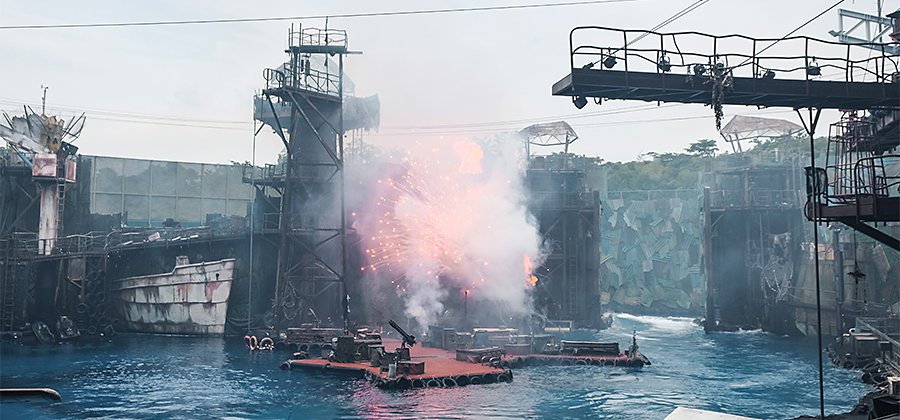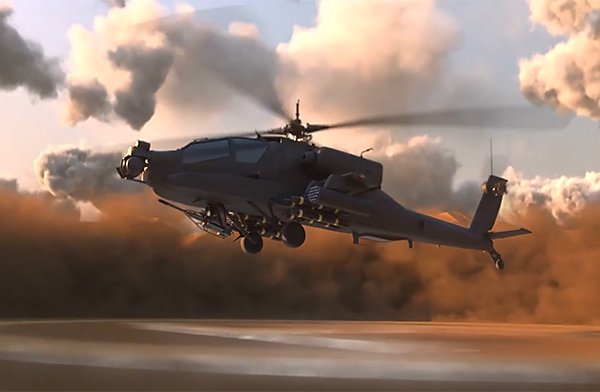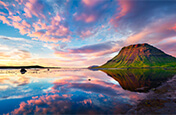From pyrotechnics to prosthetics: A guide to special effects.
Learn the difference between special effects and visual effects, their history and their future. Then start your own motion picture adventure.

The origins of special effects.
Filmmakers have used cameras to create trickery and delight audiences since the inception of the camera. Creating magic and illusions is one of the most exciting tools in the filmmaking arsenal and special and visual effects (SFX and VFX) are the juice that powers the show.
“Special effects is an art. While many special effects artists never went to art school, usually they have a background in drawing, sculpting and painting,” says director Darion D’Anjou. You can see that artistry on display in the history of the form.
A history lesson.
Arguably, the first instance of special effects is Oscar Rejlander’s photo montage that combined 32 different negatives into a single image. However, some of the earliest film special effects can be credited to Georges Méliès, who pioneered the use of the “stop trick.” For this little bit of magic, the camera is shut off, all the performers freeze, the scenery or set dressing is changed and filming is resumed. Many early films had characters disappear or scenes suddenly change with this effect.
Méliès, an artist as well as a filmmaker, created numerous other special effects in more than 500 short films, using multiple exposures, time-lapse photography, animation and hand-painted colour. From there, the world of film expanded into dozens if not hundreds of other methods of special effects wizardry, leading to the development of a second field: visual effects.
Visual effects vs. special effects.
Special effects and visual effects are often conflated, but they are different. While there are further subcategories, special effects are often practical, meaning that they are artificially created on set (for example, a controlled explosion in an action scene). Visual effects, on the other hand, are created in post-production or the editing bay. Early visual effects saw filmmakers toying with film stock, while modern visual effects deal in animation, computer generated imagery (CGI) and other post-production effects.
Each has its strengths and weaknesses. “Special effects can be preferable in many instances, because your actors can respond to the effects on set and you get lighting effects and other features you would otherwise have to create digitally, often at great expense,” says director Steven Bernstein. However, special effects often require specialised equipment, trained professionals and careful choreography, which can be challenging for many new filmmakers. Visual effects, on the other hand, open boundless visual possibilities to a filmmaker, the only limit being technical competence and creative vision.


Special effects: Creature features and composites.
Some of the most classic special effects appear in creature features and monster films from the early 20th century. Many of these films feature some truly incredible prosthetics and monster suits. And you might think that we’ve advanced dramatically, but in many ways, some of the principles remain he same. Willis H. O’Brien created clay models (later rubber over wire meshes) that were painstakingly stop-motion animated for early Hollywood-era films like King Kong.
Frame by frame, the models were manipulated and moved to give the impression of a massive ape rampaging through New York. In later films like Steven Spielberg’s Jurassic Park, a hybrid of animatronics and animator-powered CGI brought dinosaurs to life.
Compositing, where a scene is filmed with a green screen background (or, in the earlier days of filmmaking, an actual screen with footage playing on it), allows filmmakers to place actors in vivid landscapes and otherworldly locales in live-action films. The cockpit of an X-Wing is easy to create in George Lucas’s sci-fi Star Wars films with the help of green screens.
Digital compositing is one of the best tools in the modern special effects arsenal. You can see it deployed as a visual metaphor in Julie Taymor’s Across the Universe, where musical numbers are often backed by composites. Or see it in Peter Jackson’s blockbuster The Lord of the Rings series, where massive city models are composited with compelling cinematography and matte paintings to look and feel real.

Visual effects: Digital worlds and alien critters.
Green screens and blue screens are hybrid tools bridging special and visual effects. The screen, a physical object, becomes the medium for the creation of digital effects. In contemporary filmmaking, visual effects are everywhere, from superhero films to science fiction epics. You see entire digital worlds that are created entirely with high-end computing technology.
Bookending the trajectory of digital visual effects are James Cameron’s films. The 1989 film The Abyss features a CGI sea alien that wowed audiences at the time, even though by today’s standards, it might seem rudimentary. He followed it up with a metal monster in Terminator 2 that shows its age a bit. The same cannot be said for Avatar, which created an entirely CGI world and landscape for characters to inhabit and required an animation team of more than 900 people to create, as well as a lot of motion capture suits.
Visual effects teams are often massive as well. “For even small scale visual effects, we’ve got lighters, we’ve got compositors, the visual effects artists. You’re often building entire simulations and that requires a team,” says D’Anjou. The choice of whether to use special effects or visual effects is often a financial one, bound by constraints in funding or personnel.
When and where to use SFX.
Special effects and visual effects are tools for realising the vision of a filmmaking team. It’s often easy to forget the “tool” part. Special and visual effects serve a particular purpose, which is immersing your audience in the story you are trying to tell. The choice can be high stakes too. “I’ve worked on projects where we used 23 cameras to get a scene just right and we only had one or two tries to get it right,” says Bernstein.


Images by Darion D'Anjou
A common refrain at a first-time film shoot or a student film shoot is the phrase “We’ll fix it in post.” Often, VFX are used to repair mistakes made during a shoot and while that can be very useful, it gets away from the intentionality that good filmmaking needs. Going in with a shooting script and a visual effects plan will keep budding filmmakers on task and on target and the dividends will pay out.
Tools of the trade.
Once the film is in the can, it’s time for visual effects to shine. Adobe Premiere Pro and Adobe After Effects provide a dual solution to create solid edits and then populate them with mind-bending effects.
Assemble your edit.
When you’re editing around special effects, editing timing makes the difference between an explosion that looks true to life and one that loses the magic. Premiere Pro is a complete editing toolkit built for editing any film, from feature-length films to one-minute shorts.
Editing starts by engaging with tutorials and sophisticated knowledge libraries that will train you to become the editor you want to be.
Brush up on your keyframing.
A knowledge of keyframing is one of the most rudimentary skills a budding VFX artist needs. The Premiere Pro Effect Controls panel makes adding anything, from simple title animations to more complex graphics, easy to calculate and fine-tune. Learn the basics of using keyframes.
Bring the effects to life.
Editing and VFX software has advanced to the point where the only limitations are your technical skills and your imagination. If the idea of creating vivid landscapes and bizarre characters appeals to you, learning how to use the suite of tools available with After Effects is one of the best ways to build your skills.
Rotoscope your footage.
Digital rotoscoping allows you to overlay motion-filled images on existing footage in a compelling way and After Effects provides the necessary bridge for your imagination. With Roto Brush and Content-Aware Fill, you can composite images even without the use of a green screen.
With the right knowledge and background, you’ll be well on your way to creating the visual masterpieces of tomorrow.
Contributors
Do more with Adobe Premiere Pro.
Make visually stunning videos virtually anywhere — for film, TV and web.
You might also be interested in…
Understanding camera shots in film
Explore the most common camera shots and learn when and how to use them to greatest effect.
Changing video speed in Adobe Premiere Rush.
Learn how to adjust the speed of your video for purposes both practical and artistic.
Animate cartoon videos and characters.
Discover how to create animation in real-time or from the ground up.
Discover the difference between videography and cinematography.
Learn the technical and creative differences of videography and cinematography.
Get Adobe Premiere Pro
Create flawless productions with the industry-leading video editing software.
7 days free, then A$32.99/mo incl. GST.



